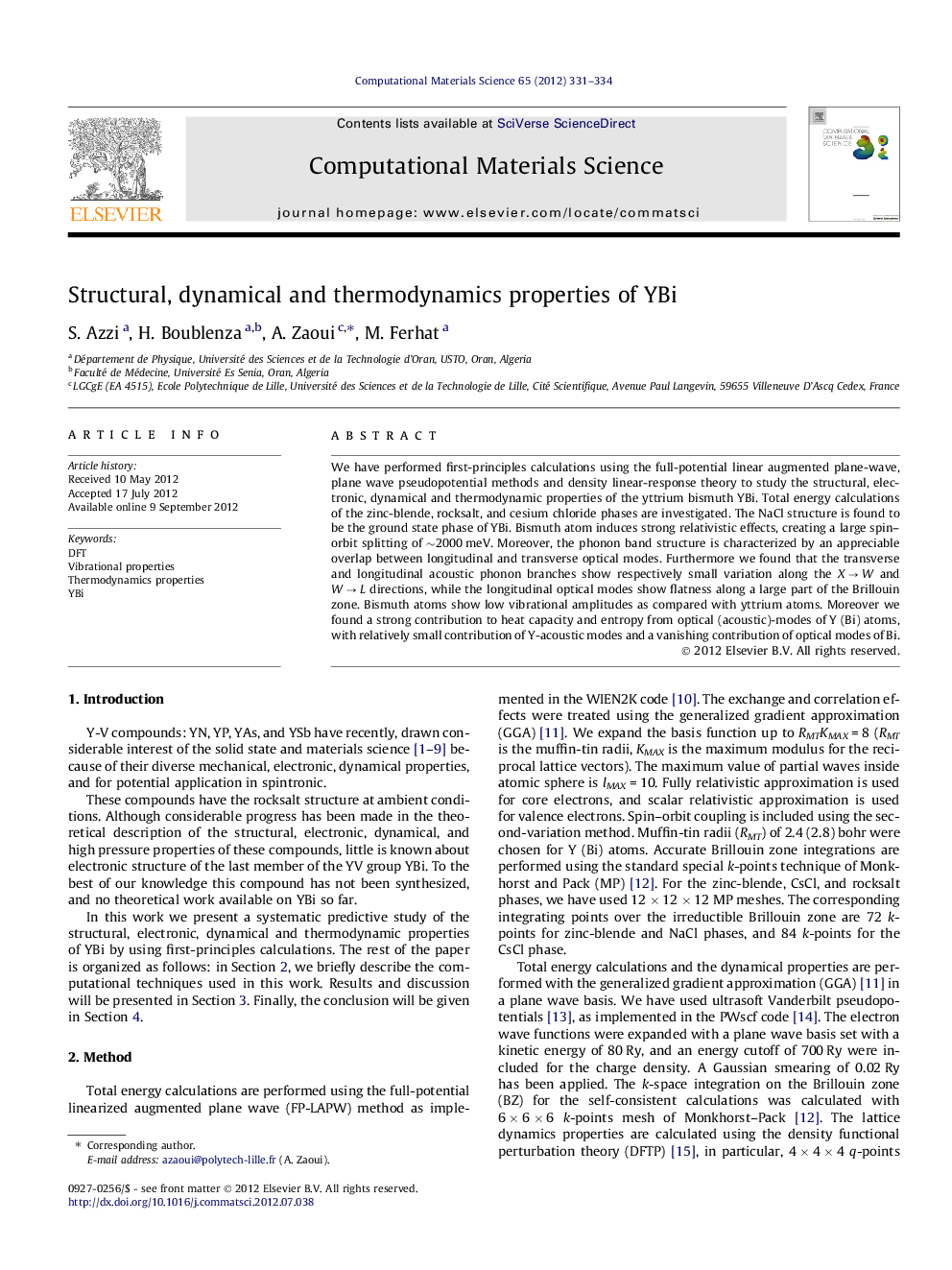| Article ID | Journal | Published Year | Pages | File Type |
|---|---|---|---|---|
| 1561641 | Computational Materials Science | 2012 | 4 Pages |
We have performed first-principles calculations using the full-potential linear augmented plane-wave, plane wave pseudopotential methods and density linear-response theory to study the structural, electronic, dynamical and thermodynamic properties of the yttrium bismuth YBi. Total energy calculations of the zinc-blende, rocksalt, and cesium chloride phases are investigated. The NaCl structure is found to be the ground state phase of YBi. Bismuth atom induces strong relativistic effects, creating a large spin–orbit splitting of ∼2000 meV. Moreover, the phonon band structure is characterized by an appreciable overlap between longitudinal and transverse optical modes. Furthermore we found that the transverse and longitudinal acoustic phonon branches show respectively small variation along the X → W and W → L directions, while the longitudinal optical modes show flatness along a large part of the Brillouin zone. Bismuth atoms show low vibrational amplitudes as compared with yttrium atoms. Moreover we found a strong contribution to heat capacity and entropy from optical (acoustic)-modes of Y (Bi) atoms, with relatively small contribution of Y-acoustic modes and a vanishing contribution of optical modes of Bi.
► The NaCl structure is found to be the ground state phase of YBi. ► Bismuth atom induces strong relativistic effects, creating a large spin–orbit splitting of ∼2000 meV. ► Phonon band structure is characterized by an appreciable overlap between longitudinal and transverse optical modes. ► A strong contribution to heat capacity and entropy from optical (acoustic)-modes of Y (Bi) atoms.
